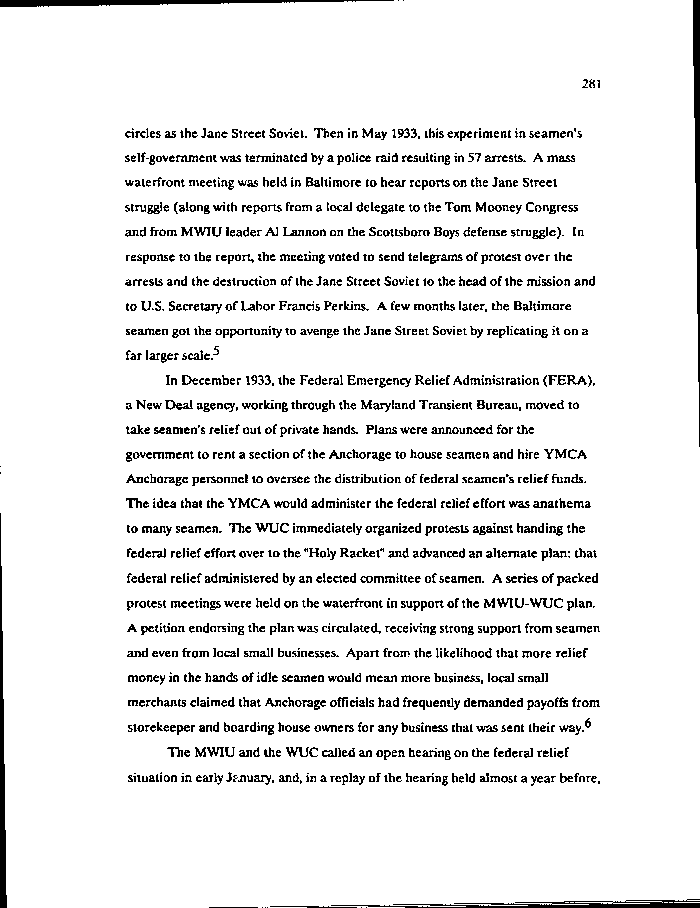|
281
circles as the Jane Street Soviet. Then in May 1933, this experiment in seamen's
self-government was terminated by a police raid resulting in 57 arrests. A mass
waterfront meeting was held in Baltimore to hear reports on the Jane Street
struggle (along with reports from a local delegate to the Tom Mooney Congress
and from MWIU leader Al Lannon on the ScotLsboro Boys defense struggle). In
response to the report, the meeting voted to send telegrams of protest over the
arrests and the destruction of the Jane Street Soviet to the head of the mission and
to U.S. Secretary of Labor Francis Perkins. A few months later, the Baltimore
seamen got the opportunity to avenge the Jane Street Soviet by replicating it on a
far larger scale.
In December 1933, the Federal Emergency Relief Administration (FERA),
a New Deal agency, working through the Maryland Transient Bureau, moved to
take seamen's relief out of private hands. Plans were announced for the
government to rent a section of the Anchorage to house seamen and hire YMCA
Anchorage personnel to oversee the distribution of federal seamen's relief funds.
The idea that the YMCA would administer the federal relief effort was anathema
to many seamen. The WUC immediately organized protests against handing the
federal relief effort over to the "Holy Racket" and advanced an alternate plan: that
federal relief administered by an elected committee of seamen. A series of packed
protest meetings were held on the waterfront in support of the MWIU-WUC plan.
A petition endorsing the plan was circulated, receiving strong support from seamen
and even from local small businesses. Apart from the likelihood that more relief
money in the hands of idle seamen would mean more business, local small
merchants claimed that Anchorage officials had frequently demanded payoffs from
storekeeper and boarding house owners for any business that was sent their way.
The MWIU and the WUC called an open hearing on the federal relief
situation in early Jpjiuary, and, in a replay of the hearing held almost a year before,
|

